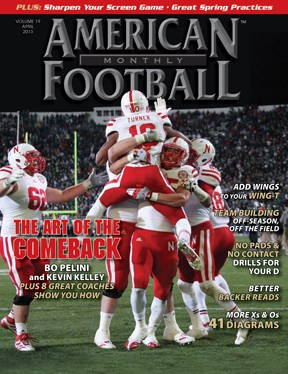Article CategoriesAFM Magazine
|
The Art of the Comeback – Rallying your team from a big deficit requires adjustments, inspiration and composure.by: AFM Editorial Staff© More from this issue Every coach faces situations where his team is trailing at halftime or late in games. No team made more comebacks last fall than Nebraska. The Cornhuskers won four conference games when trailing at halftime, including two on the road. In September, at home, th....The full article can only be seen by subscribers.
|
|
|||||||
| HOME |
MAGAZINE |
SUBSCRIBE | ONLINE COLUMNISTS | COACHING VIDEOS |
Copyright 2025, AmericanFootballMonthly.com
All Rights Reserved





